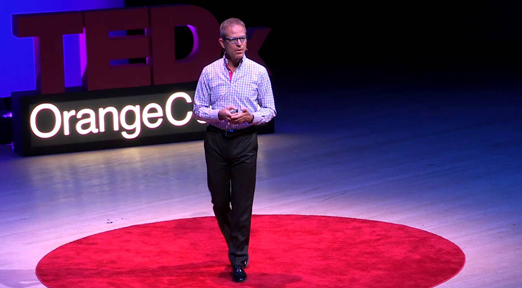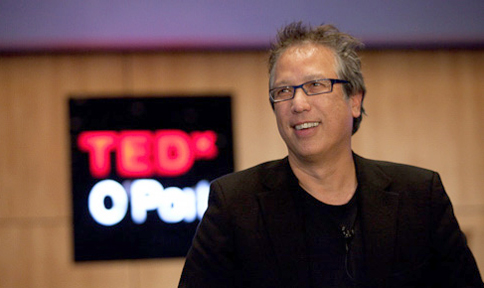
The Future of Wearables and the “Internet of Things”
| Wearables and the IoT are an electrifying marriage of advanced technologies and Internet-enablement. They blend seamlessly to give us all that is best in ambient computing to serve a remarkable range of human needs and business and government operations. | |
| |
 | What are “wearables” and the “Internet of Things” (IoT)? |
 | Wearables are electronic sensors or computers you can put on—or even in – your body that connect wirelessly to your smartphone or connect directly to the Internet. The first generation wearables focused on staying fit, active or losing weight. They go far beyond Internet-enabled fitness bands, heart rate monitors, or clip-ons. Sensors that can track physiological data and capture a broad range of useful contextual data can be incorporated into clothing, jewelry and accessories.
The Internet of Things (IoT) consists of machine-to-machine (M2M) and machine-to-human (M2H, H2M) sensors connected to the Internet; the IoT can be utilized in connected homes, connected cars, connected businesses, smart industries, smart cities, public spaces and the environment to capture valuable information. IoT objects can function without human-to-human or human-to-computer involvement, which expands their scope of functionalities and automation. One way to consider wearables and the IoT is to think about their capabilities in terms of concentric circles. The circle closest to you encompasses your body’s area network: a system or set of sensors may be on your clothing or on or inside your body. As you journey away from your body, your immediate environment forms a larger circle that has a number of smart things in it—your connected home, connected car, and connected work. All those technologies are working in conjunction to help you become more self-aware, access information hands-free, increase your productivity, heighten social connection, and keep you safe. Now, expand that circle to businesses: this circle encompasses the industrial IoT. What's going on in this circle is incredibly exciting and powerful; it's the digital equivalent of the Industrial Revolution. In this circle, businesses can obtain granular levels of information about manufacturing plants, warehouses, supply chain, logistics, operations, and retail. Industrial IoT then expands to the environmental IoT. Here, you can measure the water level of a storm-swollen river, determine the exact chemical composition of organic soil, and detect post-earthquake vibrations still active in a building. Many sectors that previously were not technologically oriented—farming, manufacturing, or government – now possess the ability to collect relevant information about the changing climate, the operation of physical assets, and the movement of goods to increase efficiency and cost savings. Entire supply networks can be managed via the IoT, allowing us to finally garner insights into how people use—or don’t use–products. Even the most humble purchase, such as laundry detergent, can take on new life. A tiny sensor on the detergent container can remind you to buy more detergent via an app when it goes below a certain amount. That same sensor can also send a message back to the factory, indicating the need for more detergent and showing which store is closest to your location. This way, the detergent can be manufactured, ordered, and restocked by the time you need it–all without your direct involvement in the process. Wearables and the IoT are an electrifying marriage of advanced technologies and Internet-enablement. They blend seamlessly to give us all that is best in ambient computing to serve a remarkable range of human needs and business and government operations. |
| The inexhaustible opportunities offered by wearables and the IoT comprise an extensive range of areas: artificial intelligence (AI)/machine learning, deep learning and neural networks, robotics, mHealth, FinTech, manufacturing, supply chain and logistics, retail, marketing, and advertising, to name a few. | |
| |
 | What are some of the most advanced new developments we might see in these new technologies in the next five to ten years? |
 | The inexhaustible opportunities offered by wearables and the IoT comprise an extensive range of areas: artificial intelligence (AI)/machine learning, deep learning and neural networks, robotics, mHealth, FinTech, manufacturing, supply chain and logistics, retail, marketing, and advertising, to name a few.
The wearables market is promising. Here are a few projections about their use: ● mHealth/ Medical: One of the sectors ripe for significant disruption is the mHealth and medical space. Medical wearables will provide something entirely new -- continuous, consistent monitoring of patients’ physiological parameters both inside and outside of hospitals, clinics, and rehab centers. The holy grail of sustainable and scalable preventive health can be realized in a cost-effective and non-invasive manner. Wearables will have a tremendous impact on patient outcomes and a positive effect on mortality and morbidity rates. Preventive healthcare, telemetry, drug compliance, predictive analytics, and research, all stand to garner valuable gains from the data provided by wearables. • Mind Control: EEG headbands will advance beyond today’s basic mind control to the much-dreamed-of human-computer interface (HCI). The time horizon may be longer than ten years, but expect that mind control–in conjunction with your virtual ambient personal assistant–will be able to handle most of your needs. • Augmented Reality/ Virtual Reality: AR/VR is already revolutionizing gaming, films, entertainment, live sports, hands-free medical procedures and service work, but the real potential in this area lies in the complete overhaul of the workplace. White-collar workers will no longer be chained to their desks in order to be productive. They will not need tables, white boards, or conference rooms. Through AR/VR, tomorrow’s creative workforce will be able to perform all the computer tasks virtually in thin air, anywhere, anytime, with anybody. • AR/VR Advertising: Imagine a world where there is no need for physical billboards, connected TVs, or digital signage. Animated advertisements will come alive based on your location, context, and interest. For instance, if you stand in front of Times Square, you might be able to see a thundering T-rex charging a hungry gang of velociraptor, the virtual advertisement for the latest Jurassic Park flick. • Cognitive & Emotional Analytics: Most people struggle to tell how others are feeling; intuition eludes many of us. Whether it’s in the context of healthcare, retail, marketing, live events, hospitality, financial advice or sales, wearables and the IoT will inform us about how other people feel and perceive their situations. This information will aid service providers or brands in optimizing their messaging, promotions, or recommendations to suit the individual’s or a target segment’s interests, frame of mind, and state of emotions. Imagine having the power to optimize contextual messaging at the right time, the right place, when the recipient is most receptive. The Internet of Things will be ubiquitous: • Disruptive Networks: Tired of that exorbitant monthly wireless bill, but chained to a long-term contract? Consumers tired of their wireless contracts will be able to connect to the Internet for free–or at significantly reduced rates– and with better, more reliable coverage. New technologies in mesh networking combined with low-power, wide-area networks will redefine business models. • Animate Inanimate Objects, Things, and Places: Parents may feel like there are days when they are only talking to the walls, but advancements in human-like 3D avatars, natural language processing (NLP), and affective computing will really make that happen. Buildings, cars, library displays, and a host of other everyday objects will come alive and interact with you, helping you with your immediate or long-term needs in a human conversational way that interprets not only what you say, but how you feel. • Advanced Data Analytics: Big data is hot now, but it will give way to automated workflows and logic based on advanced analytics aggregated from IoT sensors. A fire in a high-rise can immediately kick off an automated workflow before it can cost lives and destroy property: signal the local fire department, relay real-time vital information about the fire and affected floors, automatically initiate emergency procedures in the building, stop ground floor pedestrians from entering the building and elevators, and reroute street traffic to blockade the skyscraper. Retailers, brands, and manufacturers will obtain advanced, predictive insights from deep learning and neural networks. A clear, vivid picture created from data patterns and predictive analytics will inform their decisions on how to optimize sales and marketing activities, production, supply chain, and distribution to drive top-line growth. |
| The fundamental force driving emerging technologies is the enhancement of the quality of life. | |
| |
 | Why are these technologies important in today’s world? What effects will they ultimately have on our daily lives? |
 | The fundamental force driving emerging technologies is the enhancement of the quality of life. This third major wave of computing—somewhat similar to earlier waves–is about accelerating innovation for the advancement of our world. It reduces information asymmetry and equips larger proportions of the global population so they can rapidly innovate. Moore’s Law helped predict the explosion we see in technology. We can expect a quickened velocity of innovation that becomes more rapid with each successive innovation cycle. |
 | How does mobile factor into the development of these technologies? |
 | Mobility equals freedom. Mobile devices enable these technologies to be tether-free and hands-free. Children today have an advantage that many of their parents lacked as youths: they don’t need to physically visit the library to perform research. They can do it from the comfort of their living room with the touch of a button, or even better, on a smartphone anywhere.
What prophecy can be made about mobility? Underlying mobility is a radio frequency, or more broadly, the electromagnetic spectrum. The electromagnetic spectrum influences absolutely everything---from the structure of water to energy in the form of sound or visible light. Future emerging technologies will continue to push the boundaries of the electromagnetic spectrum (e.g., LiFi, a wireless optical networking technology that uses infrared or visible light for data transmission). |
 | What factors are most critical in getting consumers to adopt wearables and IoT technologies? |
 | People will take to wearables and the IoT when they realize the tremendous problem-solving abilities of these technologies. How do you know if people will love your wearable or crave your IoT product?
In my WT | Wearable Technologies Magazine article entitled “Winning the Wearables Race Through Human Psychology,” I provide a framework for creating winning wearables and IoT solutions. Here’s a high-level summary: 1) How does your solution support the human need to be accepted? |
 | Which companies do you think will be vanguards of these new technological developments–smaller companies or larger tech players, like Apple, Google and Amazon? |
 | Both small and large companies will lead the charge into this new arena, with a caveat. There are very few truly built-to-last companies that can weather the test of time (think IBM, GE, JPMorgan Chase, DuPont, and Colgate-Palmolive). Today’s tech brands will inevitably be replaced or absorbed by new players.
Expect a handful of unicorns (billion dollar valuation startups) to emerge from wearables and the IoT. The rest will eventually be nestled into the product portfolios of the big tech players. Peter Thiel once noted that if you want to create and capture lasting value, build a monopoly: “By "monopoly," I mean the kind of company that is so good at what it does that no other firm can offer a close substitute. Google is a good example of a company that went from 0 to 1. It hasn't competed in search since the early 2000s, when it definitively distanced itself from Microsoft and Yahoo!” |
 | You’ve launched several startups. What were the biggest challenges you faced in getting those businesses off the ground, and how did you solve those challenges? |
 | For years, I focused on the idea, product, and team, but never on myself. I never wanted to be in the spotlight. I am an incredibly private person. I even refused to be on social media for more than a decade. It wasn’t until I decided to invest in myself that things began to change. |
| Give yourself time, develop your network, and get over yourself. Entrepreneurs should hang in there, and most of all, know that the journey is the reward. | |
| |
 | What advice would you give an entrepreneur who is trying to start a tech company in today’s market? |
 | Give yourself time, develop your network, and get over yourself. Entrepreneurs should hang in there, and most of all, know that the journey is the reward.
As I glide into my 40’s, I have learned that there is no better mentor than time. The hubris of the 20’s and 30’s wears off and you begin to plod down the humble road to introspection. No amount of advice from others is as meaningful as your own hard-earned experience, tears, and sweat. In regard to building your network, it’s a colossal mistake to lead with a “What’s in it for me?” attitude. Real effectiveness begins by harnessing the power of your network using the right attitude---“How can I help you?” Increase your effectiveness. Implement systems and processes to optimize your cognitive and emotional states. Know the right combination of exercise, caffeine, sleep, rest, focus, assertion, and social connection to keep you sharp and effective for every interaction. For example, I don’t drink or smoke. I rely on daily exercise, organic green tea, mental exercises, and written goals to be my best. Everyone’s journey will be different, but at some point, we all face challenges — the implosion of a team, VCs oust the founders, the Board changes the course of the company, or an economic downturn immolates your startup. Do you really have the passion to ride out the crisis? What if that crisis lasts months? Or years? There’s something magical about those precious few individuals who have the courage, resolve, and patience to keep going when everyone else quits. Most entrepreneurs pursue wealth, fame, and prestige, but my reward is the journey itself. I am a much stronger, better person today because of the jagged path that led here. I want to share my life experiences to inspire others who are considering entrepreneurship, influence those already struggling on the path, and improve the lives of veteran innovators who are honing their skills. =============================================== To bring Scott Amyx to your organization to learn more about cutting-edge technologies and business strategies, please contact Michael Frick at: Mike@Speaking.com. |















